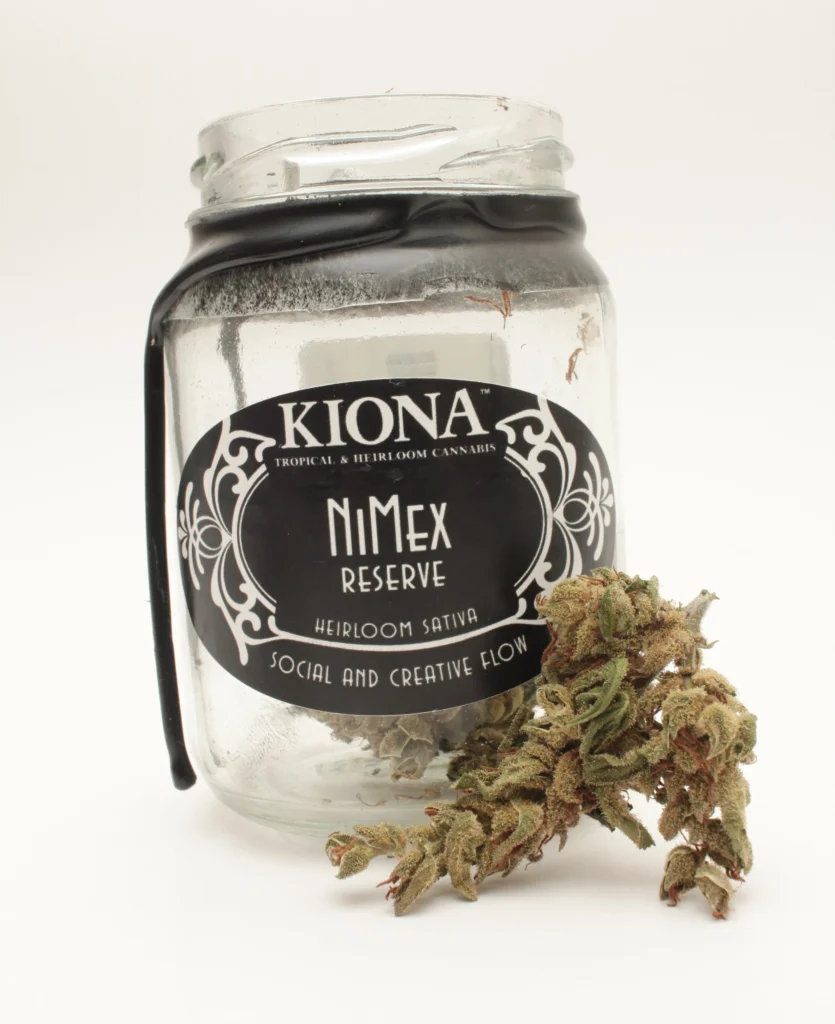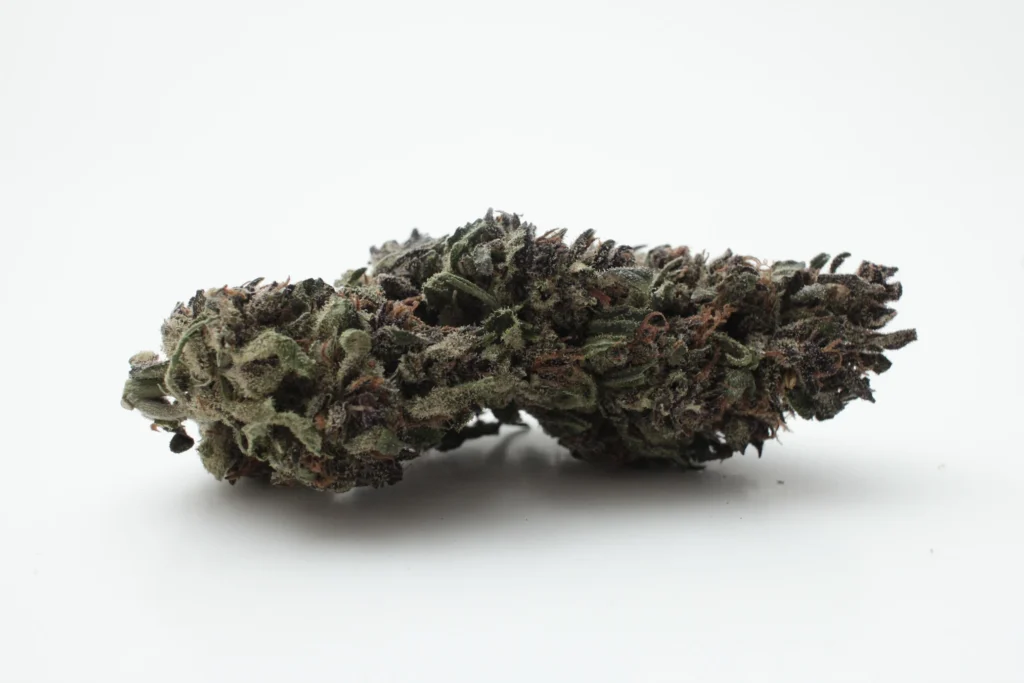Today we’re going to introduce you to the landrace strains of cannabis! Long before names like White Widow, Super Silver Haze, or AK-47 graced the centerfold of High Times, there were the landraces, weed that grew wild and free, like cowboys in country songs. Now, you should know that the precise definition is contested between cannabis purists and pragmatists, but for our purposes, a landrace strain is associated with a place of origin, like Thailand or Durban, South Africa, where growers have preserved distinctive plant traits (like smell, flavor, and effects) that come from that specific region. Sometimes those strains are just like the antique ones that evolved in the wild, but sometimes a breeder will combine unique local varieties to make a new strain and that can also be considered a landrace. Whichever way you look at it, the ancestry of every strain on dispensary shelves today can be traced back to vintage landraces if you go far enough. In fact, you’re probably already used to the most common terminology used to describe original landrace strains: indica and sativa!

Landrace Strains: Indica or Sativa?
How do those ever-present terms ‘indica’ and ‘sativa’ apply to landrace strains? Centuries ago, when European botanists and taxonomers were making fancy names for everything, they called the hemp used for making rope and other supplies Cannabis Sativa. They called the smellier, stickier, smokeable stuff with THC Cannabis Indicae (which means Indian Cannabis) because that’s where European people were finding it at the time. To them, anything that got you high was basically a landrace indica strain!
Over time, psychoactive cannabis strains from all over the world were found to come in different shapes, sizes, and effects, so eventually we started using Indica and Sativa to differentiate short, bushy plants with narcotic effects (the indicas) from the taller, lankier plants with more cerebral effects (the sativas). Up until the 1970s, most cannabis used around the world could more or less be considered a landrace strain, and the sativa morphology, or structure, was much more common.
Things changed again as marijuana became more illegal and instead of importing landrace strains from outdoor farms in other countries, people began breeding tall landrace sativa strains from places like Thailand and Columbia with shorter landrace indica strains from places like Afghanistan and Iran. These new polyhybrid strains were suited to indoor growing, but over time, the structure and effects of original landrace strains became blended together, and many of the unique effects people enjoyed from imported cannabis became harder and harder to find in American grown weed.
These days, most of us have gotten used to hybrid marijuana strains. Seeking out the unique traits preserved in vintage landrace strains might not appeal to everyone. Tokers seeking very specific effects, though, along with strain-hunters and those interested in cannabis history, will find a veritable cornucopia of vintage ganja to comb through these days!
Landrace Indica Strains
For some patients, the powerful body effects of landrace indica strains are what they’re really after. Usually recommended for nighttime use or serious pain relief, landrace indicas can envelop the body in warming, calming sensations not entirely unlike opioids and other sedative drugs. Popular in regions with long histories of hash making, landrace indica strains like Hindu Kush have become legendary all across the world. Some of the favorite landrace indicas from Afghanistan, Pakistan, Iran, India, and Nepal haven’t changed much over the years and are still being sold all across the globe.
The short stature and dense bud structures of indicas make them more economical to grow in tight spaces than sativas, so this morphology flourished in closets and basements across the U.S. during its prohibition. Most stoners have tried strains that are very similar, genetically speaking, to true landrace indica strains. But what if you’re looking for something a little more thought-provoking?
Landrace Sativa Strains
Enthusiasts of landrace sativa strains are often after the stimulating, cerebral, and psychedelic effects that are attributed to these “leaner” cannabis varieties from all over the world. In the past, many people turned to cannabis primarily for its uplifting effects on mood and enhancement of food, music, & socializing. Hybrid marijuana strains can still have that effect, but sooner or later that effervescence turns into exhaustion. Landrace sativa strains can provide all the smiles and stimulation with none of the snores, but this once-abundant type has become increasingly rare!
The hunt for vintage sativa lineages usually starts with heritage from tropical or warm lowland regions of the world, namely Southeast Asia, Africa, and South America. Almost all modern sativa strains in the U.S. have lineage that can be traced back to landrace strains obtained in Thailand, Columbia, and South Africa!

What Is the Strongest Landrace Strain?
Landrace strains often get a reputation for being weak in potency, but that’s far from the truth. You’ll see below that a vintage Thai Stick bundle tested at nearly 30% cannabinoids and many other vintage and contemporary landrace strains have shown high cannabinoid and terpene levels. One of the unique things about landrace strains is the different ways you can feel their effects, and even with today’s modern strains, it’s an overlooked aspect of potency. For example, I love cerebral strains but many people want a body effect. When they sample my head stash, they aren’t impressed, and for me, their favorite strains don’t get me to the right place.
That’s more true than ever for exploring landrace strains. Many people would say Afghani indica strains represent the most overall potency when it comes to body and couch-lock effects. Some African sativas may be intensely cerebral but also activate the body with energy that can become dizzying and disorienting and leave you stuck to your seat in a non-functional state. Thai strains tend to have soaring and uplighting effects on mood without less of the chaotic and racy energy, which can be great for introspective and creativity but might result in overbaked pizzas (or repeatedly wondering why you walked into a room). Colombian strains often strike a balance between all of the above and take on some psychedelic characteristics that might lead to confusion and paranoia.

That being said, modern ‘polyhybrid’ strains are often the best at checking all the boxes and providing many of these landrace effects all at once. To some people, that feels like the most potent option. Just remember that you won’t be able to feel each particular effect as intensely as you can with large doses of landrace strain, and oftentimes, the blend of different effects may lead to burnout or grogginess and a higher tolerance.
If you’d like to try exploring the ‘higher ceiling’ of landrace strains, check out some of the most popular regions that produce landrace strains!
Popular Landrace Strains
Consumer interest in rediscovering landrace strains means there’s a growing list that you can find available, so let’s narrow in on some of the most popular requests when it comes to choosing landrace strains!
Mexican Landrace Strains
Mexico has a wide range of climates that are perfect for growing landrace sativa strains! Over the years, many sativa varieties from other countries have found homes in Mexico and the country has become famous for localized varieties coming out of Michoacán, Chiapas, Oaxaca, and of course Acapulco, Guerrero!
Ahhh, the legendary Acapulco Gold. I’m sure the younger ones among us have shared with an elder only to be surprised by their indifference for our best smoke. “When I was your age,” they might have said, “it didn’t look this pretty, but it sure doesn’t feel like it used to. I haven’t felt anything like Acapulco Gold since I was your age!”. Said by many to have gone extinct years ago, the name has been popping up lately, in some cases with positive feedback!
We recommend checking out the Acapulco Gold BC1 (meaning first generation back cross) from Mountain Organics, who claim to have crossed a forty year old Acapulco cut and a ‘Maya’ landrace to produce the seeds. The effects are said to be motivating and intensely euphoric with a taste similar to freshly-brewed coffee!
Oh, by the way, if you’re expecting the gold colored buds of vintage imports, don’t hold your breath. The gold and red colors that yesterday’s landrace strains were named after actually came from being dried and cured in the sun, not their genetics!

Hawaiian Landrace Strains
Hawaiian weed is known for it’s lighthearted and giggly effects that can wash away the day’s stress and leave you grinning ear-to-ear. For a taste of the care-free island life in your next toke, Sweet Island Skunk is a hybrid with Hawaiian landrace lineage that’s still popular in modern strains. For example, the midwest U.S. has become well known for Golden Goat and it’s stimulating and psychedelic head high.
But what about older Hawaiian vintages like Maui Wowie, Kona Gold, and Puna Budder?
They’re still easy to find by meeting the right people on the islands, but there’s so many imitations and replications of Hawaiian landrace sativas that it’s hard to narrow down which ones really provide the real island mystique. After all, a big part of that magic comes from the climate and sweltering Hawaiian sun and not just the genetics themselves. As laws change across the country, we expect native Hawaiian genetics to make a resurgence.
Finally, if you can track down Molokai Frost, it’s said to be one of the most faithful stateside stabilizations of Hawaiian buds that started with an authentic Hawaiian clone.
Iranian Landrace Strains
Compared to Mexico and Hawaiian landraces, Iranian landrace strains are as ancient as they come. Cannabis growers in the region have been selectively growing consumable cannabis for thousands of years. Without the contributions of these age-old farmers, we probably wouldn’t be here today talking about landrace strains!
In one way or another, we’ve all tried some Iranian landrace genetics. In fact, one of the most popular indica strains from licensed cultivators is Verano’s Mag Landrace. Although they’ve kept the details somewhat secret, Verano claims it’s a genuine propagation of a plant located and brought directly back from Iran. Like many landrace indica strains from the Middle East, the Mag Landrace is a bit more complex than just a strong body high, but as the hours roll by, most users will find themselves slowing down into a deep, dopey slumber.
Because of the long history of cultivation in the region, fans of Iranian landrace strains will probably find strains they like from nearby Afghanistan, Pakistan, and India. Typically, these landraces will be ‘indica’ strains but there are also many landrace sativa strains from these regions. The options here are far too great to list, but a good starting point is the Indian Landrace Exchange.
Thai Landrace Strains
A discussion of landrace strains is hardly complete without including Thailand. Throughout the 1960s and 70s, ‘Thai Stick’ became a staple of American cannabis markets and Thai landrace sativas are still world-renowned for their cerebral effects and chocolatey flavors. The late Franco Roja described Thai weed as, “very energizing and uplifting, creeper and long lasting, but with a particular smoothness and feel”.

Contrary to popular belief Thai stick is not a cigar, it’s a spindle of buds tied to a stick. Here you can see the famous red string, but other colors were sometimes used to indicate different regions or strains.
Pure landrace Thai strains haven’t been available on American markets for decades, but prolific breeding strains like the original Haze, Northern Lights #5, and America’s namesake Chemdog all have Thai parents. These hybrids and their offspring rarely capture all the qualities the Thai Stick was originally known for, but the flavors and upbeat high of the Chocolate Thai have made short-lived comebacks through boutique strains like Chocolope and Chocolate Diesel. Although it’s very hybridized, the chocolatey Thai goodness and stimulating effects broke into the mainstream as the backbone of GG4, the best-selling strain of the 2010s!
Even if one could find the right genetics, growing an actual Thai landrace strain is not feasible for most growers due to their vigorous upward branching, tendency to self-pollinate, and low germination rate. Luckily, there are a few legendary hybrids that have captured the essence of Thai strains into a more manageable package.
Colombian Landrace Strains
Strains from South America have played a huge role in shaping the American weed market, with Colombian landrace strains being some of the original breeding stock for hybrids like Skunk #1 and Haze, which went on with Northern Lights to create most of the cannabis we use today. Colombian genetics are thought to have arrived through Africa and Asia centuries ago but they’ve become distinctive in their own right over time, often blending together the traits of African landrace cannabis with that of Asian and other landraces.
Colombian landrace strains may provide a long lasting boost of mood and energy, but with effects that set in immediately instead of over time. In some cases, that can lead to thought loops, paranoia, and forgetfulness, while others find Colombian weed to be more relaxing than other landrace sativas. Of course, it all depends on local variety, but some Colombian strains may be the perfect middle ground between unwieldy pure sativas and today’s underwhelming sativa-dominant hybrids.
Although they’re shorter than Thai landrace strains and usually produce a better yield, Colombian strains still had to be hybridized in mountainous regions of the U.S. before proliferating into backyard and indoor gardens in the 1980s. If you’re up for the challenge of a long-flowering variety but want to skip some of the hassles of a Thai Landrace, growing a Colombian landrace might be just the right thing for you. Unfortunately, Colombian genetics are less accessible than Thai, but there are still some good options.
Malawi Landrace Strains
Even though South Africa’s Durban Poison has become the premiere namesake African strain, Malawi landrace sativas were among the first to garner international acclaim for their potent, energetic buzz. Malawi bud has also been associated with the anaerobic style of ‘cob’ curing, which seems bizarre but is actually quite a common agricultural practice all across the world.
Instead of hanging vegetables or plants to dry, it’s possible to bury them in the ground and allow bacteria to ferment — and thereby preserve — the crop. In the case of Malawi weed farmers, slightly damp buds are tightly packed into a banana leaf and wrapped with string to create an airtight container. Weeks later, the resulting “brick” weed has a completely different look, smell, taste, and effect than hang-dried weed.

Younger smokers might think of brick weed as nothing but low-potency schwag, but others may have fond memories of the smooth and potent smoke from these unsightly, strangely aromatic buds. Unfortunately, it’s hard to distinguish the quality of compressed buds, and eventually the American market was flooded with low quality, unfermented buds smashed together for smuggling across borders. For modern American growers, cob curing has become a novelty experiment, but in hot and dry climates, cob curing is still the best way to produce a stronger, more pleasant smoke than would otherwise be possible.
To explore the racy landrace sativas that Malawi has to offer, The Landrace Team has an impressive collection of landrace strains that includes a pure Malawi Gold with a 16-week flowering time.
Final Thoughts on Landrace Strains
Although landrace strains may lack the all-in-one potency of favorites like Sour Diesel and OG Kush, the narrower range of effects might actually allow a much higher ceiling for a heavy user that has different needs throughout the day. On the other hand, infrequent cannabis users might prefer the predictability of landrace strains, which can help new patients figure out the effects that benefit them best. Daily smokers might enjoy turning their normal ritual into a unique opportunity for an intimate connection with the past, too. It’s like smoking a living dinosaur, man! How cool is that?
